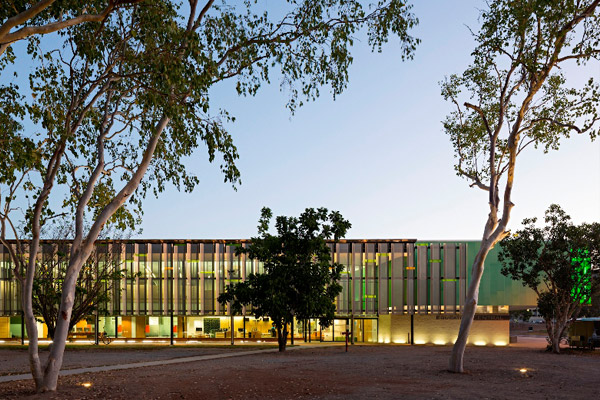
With the increase of remote education options, the importance of physical campuses and direct interaction between educators and students has been called into question. Peter Sackett visits James Cook University’s Student Education Central to explore why physical and social context is still crucial to effective learning.
You could be forgiven for presuming the institution of the university campus — a venerable student-thronged crucible for collegiate social activism, running pants up the flagpole, and other fond memories — is one more quaint relic of the recent past, like supermarket bag boys or paper cheques. Back in 1985, the Val Kilmer comedy/science film “Real Genius” presciently joked about the dawning trend of distance learning with a sequence in which a gaping lecture hall is populated only by tape recorders, both in the seats and at the podium. That scene strikes us as considerably less outlandish today. But there is renewed enthusiasm — and matching doses of prolixity — for bringing people together — physically together — in learning environments.
Story continues below advertisement
The tough part for a designer, according to Hamilton Wilson, a fourth-generation architect and managing director of Wilson Architects, in Brisbane, is to parse committee-speak and purple prose into something that’s clearly defined first, and take action from there. The firm’s recently completed Education Central building, a three-storey glass and concrete pavilion with gills of metallic brise soleil, at James Cook University, in Townsville, is the school’s hard-earned reward for enlisting an architect willing to guide his client through exercises in remedial thinking.
Story continues below advertisement
“We hear all kinds of rhetoric from educators about how one or another learning space can enable certain activities,” Wilson said, “but without genuine understanding of what’s happening in them. They want this kind of space or that kind of space, but there’s no research. I’m more interested in empirical data, and that’s not easy to come by.”
Story continues below advertisement
Wilson’s team made extensive enquiries into how students used the learning spaces they already had, including those on JCU’s Singapore campus. What impressed him most were not the facilities themselves (nothing remarkable there) but the “visceral connection”—the physical proximity to one another that students seemed to crave and benefit from. “We’re social creatures,” Wilson stressed.
Education Central’s five primary room types have been designed with maximum flexibility as the goal. Each is essentially like the others — loosely organised around work surfaces, and with a shallow-tiered egalitarian topography, but at different scales to host varying group sizes.
Wilson sees the building not as the overall solution to engaging students in the most constructive ways, but as a new starting point on which the university can build. “But I guess the Holy Grail,” he reflected, “is: have the students learned?”
Wilson Architects
wilsonarchitects.com.au
James Cook University
jcub.edu.au